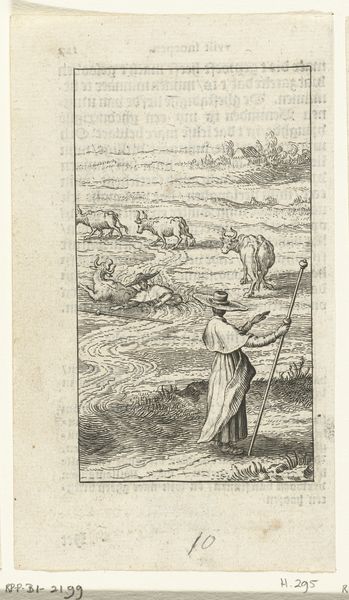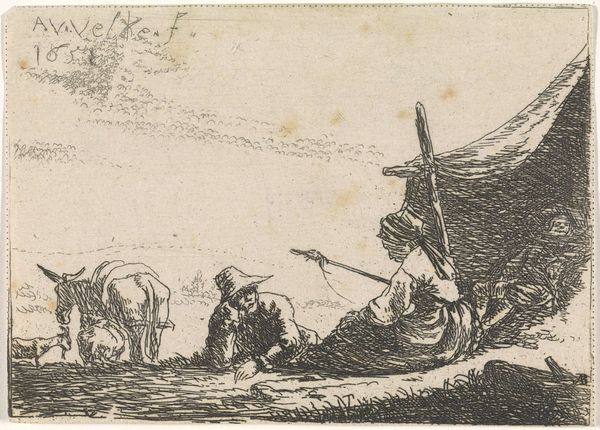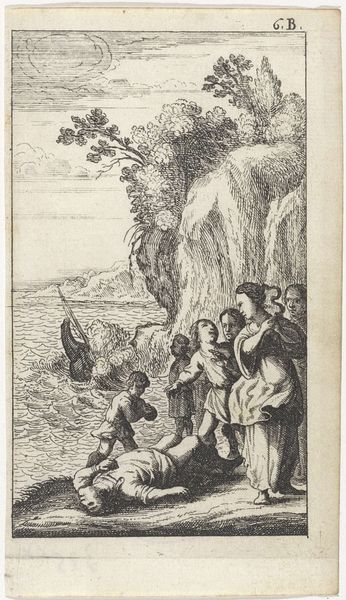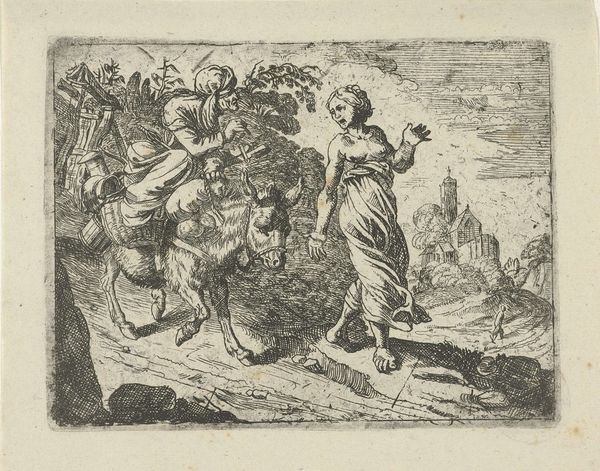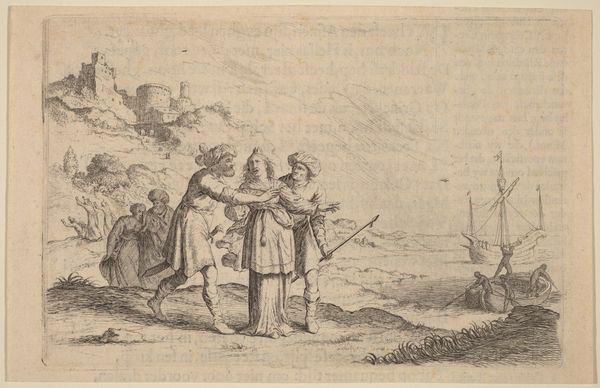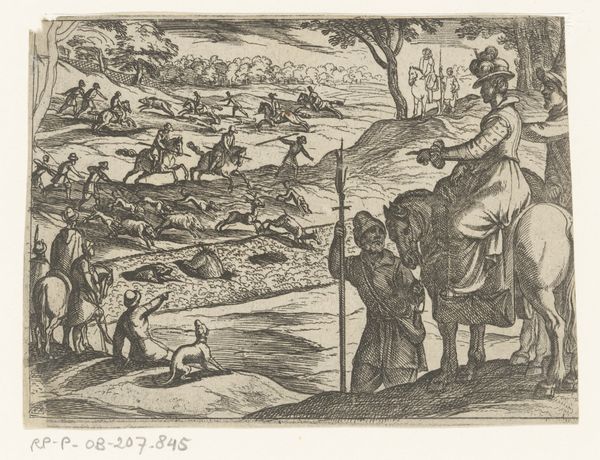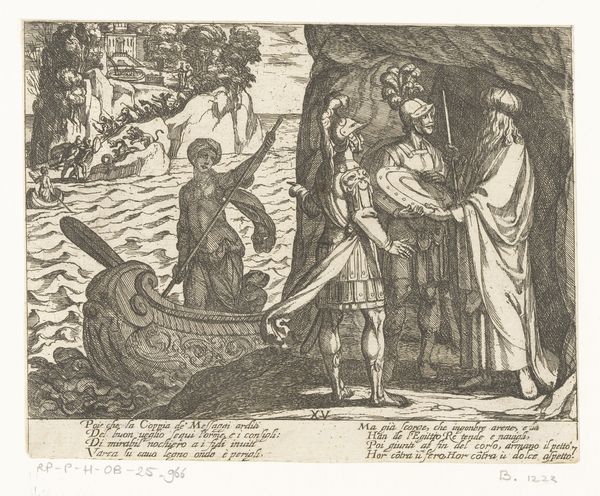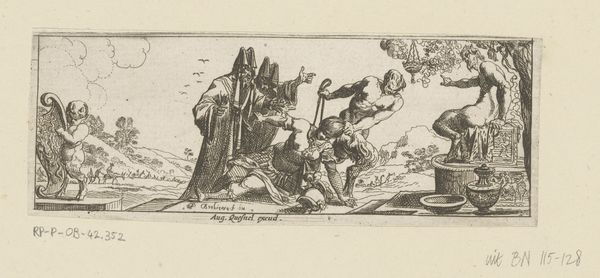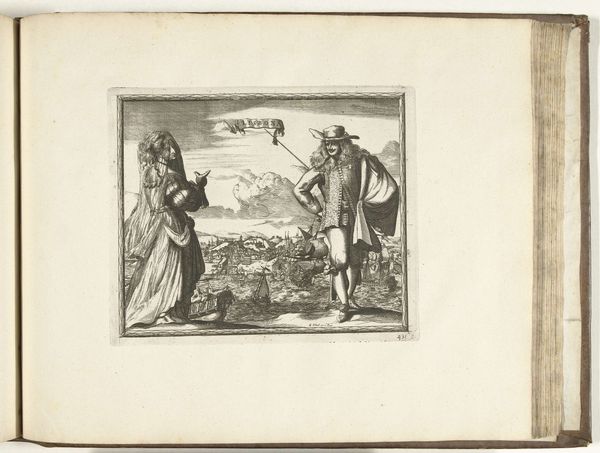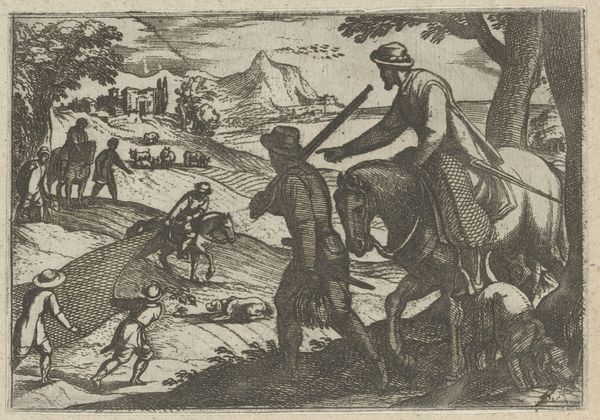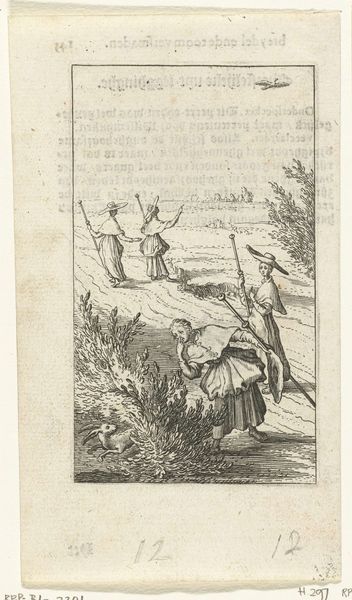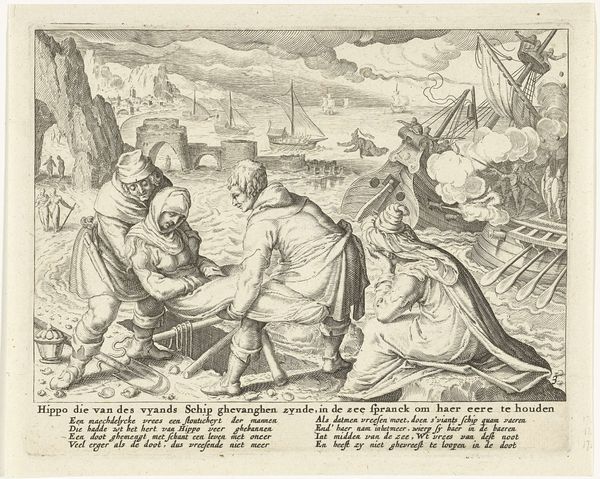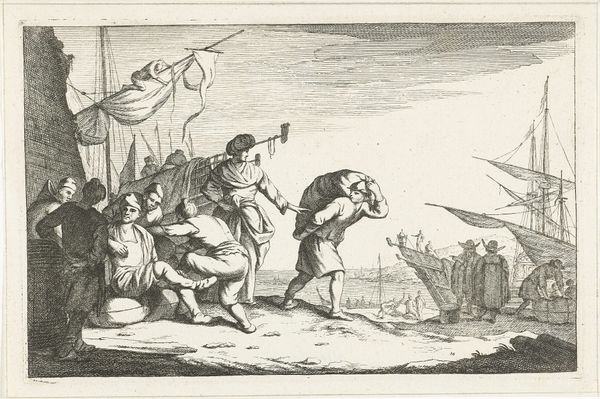
print, etching
#
narrative-art
#
baroque
# print
#
etching
#
landscape
#
figuration
Dimensions: height 105 mm, width 157 mm
Copyright: Rijks Museum: Open Domain
Curator: This etching from between 1632 and 1634, titled "Afstammelingen van Noach vinden de roer uit" by Willem Basse, pulls us into a narrative moment. Editor: My immediate impression is of anxiety. The churning waves, that small boat struggling against the current—there's a sense of desperation. Curator: Precisely. Willem Basse depicts a critical moment from the narrative of Noah's descendants discovering the rudder after the flood, a pivotal element in charting their new world. It's about innovation born of necessity. How might the legacy of that 'necessity' resonate today? Editor: In terms of artistic expression, the etching itself is full of conflict; the tiny figures wrestling for control amid so much chaos echo our own contemporary struggles for stability and direction amid societal flux. Basse almost seems to reflect a gendered struggle; while some are laboring, others stand above, seeming to expect action. The perspective invites a re-thinking of who bears the burden of world-building after devastation, be it natural or systemic. Curator: I'm intrigued by that reading. The landscape's prominence, almost swallowing the figures, also points towards our place within the larger environment—the inherent precarity we face in seeking mastery over forces much greater than ourselves. Think of the rise of merchantilism in this era! The discovery of the rudder has historical as well as aesthetic impact on us as modern consumers of this art. How might the viewer have reacted to the message of this piece in its own time, relative to how we read it in ours? Editor: I see Basse hinting at the socio-political shifts inherent in technological progress; as maritime innovation developed during the early age of exploration, how were these new roles taken up among the population, and did it exacerbate or relieve tension between traditional labor roles and modern enterprise? I imagine a contemporary audience might not pick up on those gendered visual signifiers you detected. Curator: A vital question. The piece makes me reconsider those very forces that still propel human action, technological advancement, and survival to this day. Editor: Agreed, that little boat reminds us of how easily mastery of tools becomes essential to navigating not just the natural world but also social structures and expectations, no matter the cost.
Comments
No comments
Be the first to comment and join the conversation on the ultimate creative platform.
